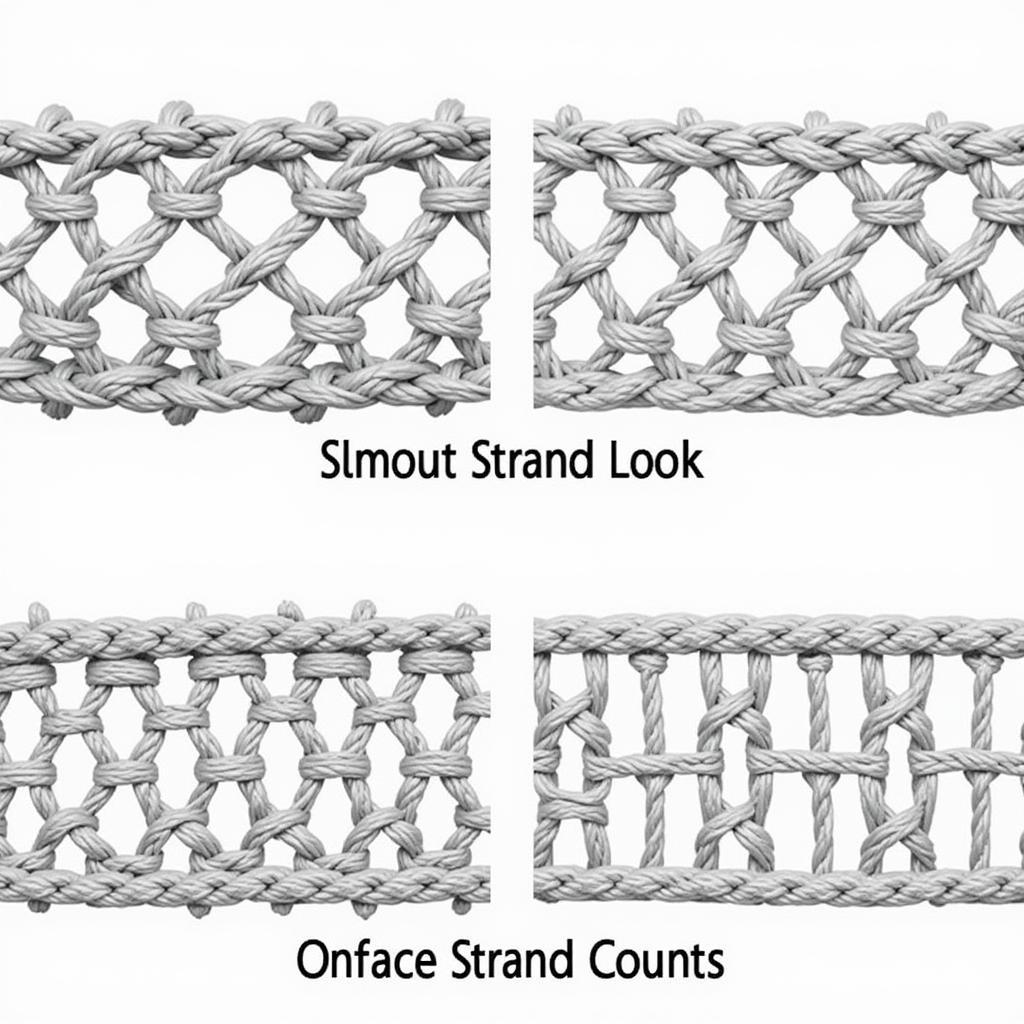Electrobraid horse fencing is a popular choice for containing equines due to its relative affordability, ease of installation, and effectiveness. If you’re considering this type of fencing for your horses, understanding its benefits, drawbacks, and various aspects is crucial for making an informed decision. This guide will delve into Electrobraid Horse Fence Reviews, offering insights based on real-world experiences and expert opinions to help you choose the best fencing system for your needs.
Understanding Electrobraid Fencing
Electrobraid fencing uses high-tensile, polyethylene braid infused with stainless steel conductors to deliver a short, sharp, but safe shock to deter horses from touching the fence. Unlike traditional wire fencing, electrobraid is more visible, flexible, and less likely to cause serious injury. It’s also relatively easy to install and maintain, making it an attractive option for horse owners.
Benefits of Electrobraid Horse Fencing
Electrobraid fencing offers several advantages, including:
- Cost-effectiveness: Compared to traditional wood or metal fencing, electrobraid is generally less expensive to install.
- Ease of installation: The lightweight and flexible nature of electrobraid makes it easy to maneuver and set up, even on uneven terrain.
- Safety: The smooth braid minimizes the risk of cuts and scrapes compared to barbed wire. The pulsed shock is unpleasant but safe, effectively training horses to respect the fence boundary.
- Visibility: The bright white braid is easily visible to horses, reducing the chance of accidental contact.
- Flexibility: Electrobraid can be easily adapted to different terrain and fence layouts.
- Low Maintenance: While regular checks are necessary, electrobraid requires less upkeep than other fencing types.
Drawbacks of Electrobraid Horse Fencing
Despite its advantages, electrobraid fencing also has some potential downsides:
- Reliance on Electricity: Electrobraid requires a reliable power source. Power outages can render the fence ineffective, potentially leading to escapes.
- Weakening Over Time: Exposure to sunlight and weather conditions can degrade the braid over time, requiring eventual replacement.
- Potential for Shorting: Vegetation touching the fence can cause shorts, reducing the effectiveness of the shock.
- Grounding Requirements: Proper grounding is crucial for the fence to function correctly. Poor grounding can lead to weak shocks or even make the fence completely ineffective.
Choosing the Right Electrobraid Fence
Selecting the right electrobraid fence involves considering several factors:
- Number of Strands: More strands generally provide a stronger shock and better containment.
- Tensile Strength: Higher tensile strength ensures the fence can withstand pressure from horses leaning or pushing against it.
- Conductivity: Good conductivity is essential for delivering an effective shock.
- Energizer: Choose an energizer appropriate for the length and type of fence.
 Comparing Different Electrobraid Fence Strands
Comparing Different Electrobraid Fence Strands
Electrobraid Horse Fence Reviews and Brands
Researching electrobraid horse fence reviews can provide valuable insights into the performance and durability of different brands. Look for reviews that discuss:
- Ease of installation and maintenance: How easy is it to set up and maintain the fence?
- Effectiveness of the shock: Does the fence effectively deter horses from touching it?
- Durability: How well does the braid hold up over time in various weather conditions?
- Customer service: Is the company responsive to customer inquiries and issues?
“When choosing an electrobraid fence, consider your specific needs and terrain. A higher strand count might be necessary for containing more powerful or determined horses,” advises John Smith, Certified Equine Facility Manager.
Installation and Maintenance Tips
Proper installation and maintenance are key to the effectiveness and longevity of your electrobraid fence:
- Plan your fence layout: Consider the terrain, gate placement, and any potential hazards.
- Use appropriate insulators: Choose insulators designed for electrobraid fencing.
- Ensure proper grounding: Install multiple ground rods for optimal performance.
- Regularly inspect the fence: Check for damage, vegetation touching the braid, and proper voltage.
- Trim vegetation: Keep vegetation trimmed back from the fence line to prevent shorting.
Conclusion
Electrobraid horse fencing offers a versatile and cost-effective solution for horse containment. By carefully considering your needs, researching electrobraid horse fence reviews, and following proper installation and maintenance practices, you can ensure a safe and secure environment for your horses. Remember that proper grounding and regular maintenance are essential for the fence to function correctly.
FAQ
- How much does electrobraid fencing cost? The cost varies depending on factors like the number of strands, tensile strength, and length of the fence.
- How do I choose the right energizer for my electrobraid fence? The energizer should be chosen based on the fence length and the number of strands.
- Is electrobraid fencing safe for horses? Yes, when properly installed and maintained, electrobraid fencing is safe for horses.
- How often should I check my electrobraid fence? It’s recommended to inspect your fence regularly, ideally weekly, for any damage or issues.
- Can electrobraid fencing be used with other types of fencing? Yes, electrobraid can be used in conjunction with other fencing types like wood or metal posts.
- How do I repair a broken electrobraid fence? Repair kits are available for splicing broken sections of the braid.
- What do I do if my electrobraid fence is not working? Check the power supply, grounding, and fence line for any shorts or damage.
“Regular inspection and maintenance will extend the life of your electrobraid fence and ensure its continued effectiveness,” adds Sarah Jones, Equine Veterinarian.
If you need further assistance, please contact us at Phone Number: 0772127271, Email: [email protected] or visit our address: QGM2+WX2, Vị Trung, Vị Thuỷ, Hậu Giang, Việt Nam. We have a 24/7 customer service team.